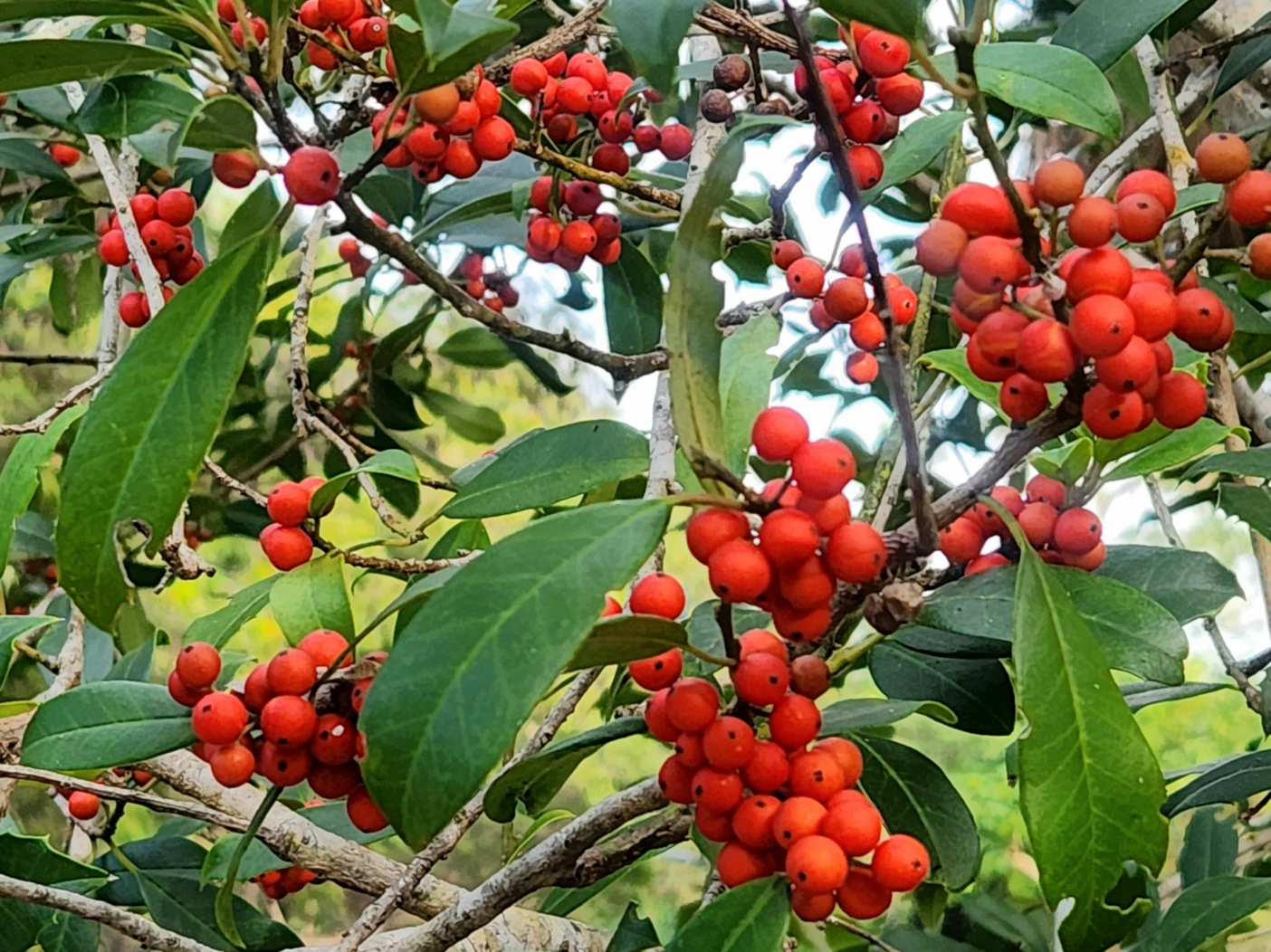
I was graced with a glimpse of Southwest Florida Christmas the other day, in the form of a dahoon holly tree (Ilex cassine) bursting with bright red berries. This one was along the Sönne Family Ghost Orchid Boardwalk. I spotted another one later in our parking lot.
Holly always makes me smile. For one, I love Christmas. For another, I grew up next to the 135-acre Lowell Holly Reservation on Cape Cod, where a coastal species, Ilex opaca, grows. At some point, a seed must have made its way to my neighborhood and planted itself in the lot next door. It made for a fine — if scratchy — climbing tree. Florida’s dahoon holly is a lovely landscape plant, but I enjoy seeing it in a natural setting, like the Preserve. It brings me back to childhood.
Dahoon is one of several native hollies that grow in South Florida. Others include inkberry (Ilex glabra), a shrub also found in the Preserve, and Krug’s holly (Ilex krugiana), a state-threatened species naturally occurring in Miami-Dade County but in cultivation in our Garden. There’s one growing next to Nina’s Pavilion in the Kapnick Caribbean Garden.
If you associate the winter months with warm drinks (I’m writing this as our temperatures dip into the 60s … brrrr!), here’s a fun fact: Some holly species can be brewed into tea. Yerba mate is a holly derivative. You can similarly seep Florida’s own native yaupon holly (Ilex vomitoria). I tried it once and found it rather unappealing, though certainly not deserving of its scientific name. There are a couple of origin stories behind that: One myth suggested the East India Tea Company influenced the name to ensure colonists stuck to British black tea. Another holds that the tea was associated with indigenous purification rituals in which large quantities of yaupon (and possibly other substances) were consumed to induce vomiting.
I’ll stick to admiring holly for its festive appearance, thanks.

About the Author
Jennifer Reed is the Garden’s Editorial Director and a longtime Southwest Florida journalist.


